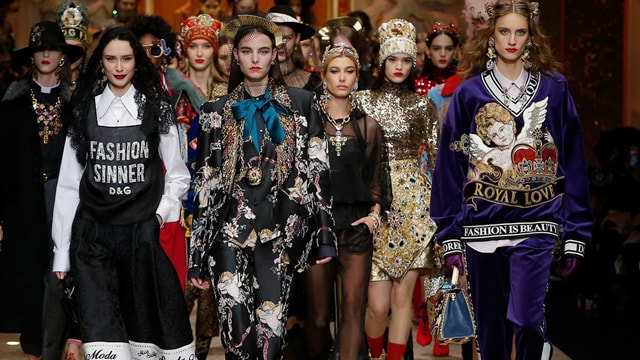
Instagram is undoubtedly the most powerful social media outlet for the fashion and beauty industry. No brand or designer can ignore the app while charting out their digital strategy. The app’s focus on imagery uses the aspirational aspect of advertising which is the most important for luxury brands.
According to a December 2017 report on Statista, powerhouses like Chanel, Louis Vuitton, Gucci, Dior and Dolce & Gabbana (in that order) have the highest number of actively engaged followers on Instagram’s world of high-end fashion.
Though there is one brand in particular, whose creators are often mocked for their over-obsession with the micro-blogging site. Italian design duo Domenico Dolce & Stefano Gabbana (both over the age of 50) are notoriously active at not just posting but also replying and commenting on other user’s posts on the photo-sharing app.
From his opinions on dressing First Lady Melania Trump to cyber fights with Miley Cyrus, Stefano Gabbana’s account is a breeding ground for viral controversies. He is often seen interacting with the internet’s ‘It Girls’ like Lottie Moss and Cardi B, most of whom are under the age of 25.
So when the brand received backlash with #BoycottDolceandGabbana trending everywhere, they instantly slammed it on t-shirts in true D&G fashion. Three years after its inception, D&G continues using the hashtag on its posts and even products as a clap back to all its critics. Speaking of critics, the brand has aplenty, a big portion of the leading fashion publications are now banned from its shows because they wrote harsh reviews.
In terms of the clothes, D&G’s collections are notoriously over the top and desperately scream for attention as if the designers are more fixated on creating shareable content than actually dressing people. Their latest ‘see now, buy now’ collection was a mix of the same old ornate Catholicism with catchy slogans like ‘Fashion Sinner’ and ‘Fashion Devotion’ plastered all over.
However, the brand’s shows and other events are all massively attended by influencers whose obscure names may not be familiar to anyone, but their millions of followers on Instagram speak for themselves.
Reputed journalists from publications like New York Times, Women’s Wear Daily, Business of Fashion and Vogue Italia (all banned) are replaced with invites to young celebrities and influencers who populate both the front row and the runway.
In a way, there is nothing creative about Dolce & Gabbana’s fashion per se. The brand’s obsession with youth culture reeks of an innate fear of becoming irrelevant in the street wear infatuated fast-fashion atmosphere.
Nonetheless, Dolce and Gabbana’s sales are far from dwindling. On the contrary, the Italian house closed the fiscal year 2016-17 at approx. 1.3 billion euros, reporting a 9% hike on the previous year’s sales.

At a time when millennials and now Gen-Z prefer edgier emerging labels over heritage fashion, D&G’s digital-first strategy, youth culture obsession and an unexclusive approach to luxury are clearly winning.
While many may quickly dismiss D&G’s tacky tactics, the designers have a clear knowledge of their consumers and are doing a great job of catering to them. Another Italian house, Gucci has redirected its entire focus on youth-centric advertising and regular artistic collaborations in the last couple of years. The results speak for themselves.
By being hyperactive online, these brands are taking real-time feedback and quickly altering/updating things for their next edits. With all this feedback, they can do more of what people are tapping Like on and even post teasers to test new products.
Instagram is a great place for brands to solicit information and assess consumer sentiments while directly engaging millions of followers from all over the world in different time zones.
This has also made these heritage houses appear more human, and less brand. The younger generation, which is only going to become a bigger luxury consumer with time, is not interested in brand value. They do not mind wearing a blouse from some obscure label they discovered on Instagram and pairing it with high-end shoes or a bag.
A preference for high-low mix has mandated luxury brands to be in the vicinity of young buzzier labels, and there is a lot to learn from heritage mammoths like Gucci and D&G whose thoughtful investment in digital is exemplary.






